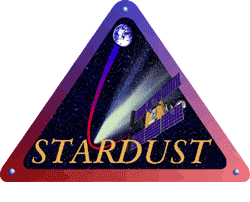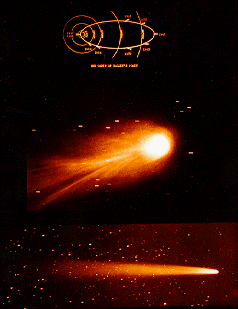

The mission
name Stardust was suggested by Don Brownlee, the Principal Investigator
on the Stardust Project. He felt the name Stardust
was simple, well known, and described the scientific
rational behind the mission.
Many mission names are from clever acronyms but
do not mean anything to someone outside the project.
Stardust, is a song, a material, a casino, an
airline, and a name that many people are familiar
with and have even dreamed of.
The idea behind Stardust began
in the early 1980's when there was an opportunity
to collect samples from Comet Halley and return
them to Earth. Bob Farquhar, from Goddard Space
Flight Center, and Fred Scarf, from TRW believed
it would be possible to redirect a satellite already
in orbit to fly past Halley.  Then,
collect dust samples, and return close to the
Earth where it might be recovered with the Shuttle.
The satellite they proposed was the International
Sun Earth Explorer (ISEE) already in
orbit about the Earth-Moon system. It carried
an unusual amount of extra fuel so that it could
maneuver in the Earth-Moon system. Then,
collect dust samples, and return close to the
Earth where it might be recovered with the Shuttle.
The satellite they proposed was the International
Sun Earth Explorer (ISEE) already in
orbit about the Earth-Moon system. It carried
an unusual amount of extra fuel so that it could
maneuver in the Earth-Moon system.
Mr. Farquhar cleverly realized
that by flying past the Moon several times, its
orbit could be changed to one that would pass
Halley and then return to Earth. NASA headquarters
asked if this was a doable mission and several
persons at JPL and Don Brownlee, Principal Investigator
on Stardust, worked feverishly on the idea. It
was soon realized that the materials used on ISEE
would contaminate any collected comet particles,
and any returned sample would be un-analyzable.
It was also quickly realized that a small dedicated
spacecraft could be built to do this mission that
would be very simple and low cost.
How do you design a comet
catcher?
Click on: The
Design
Last updated November
26, 2003 |
|
